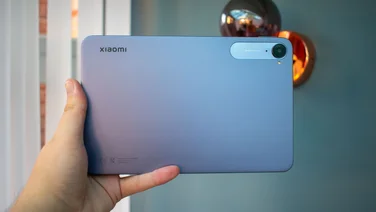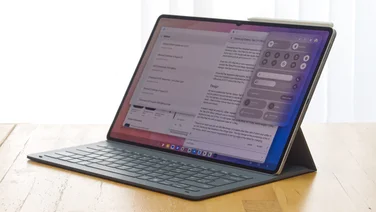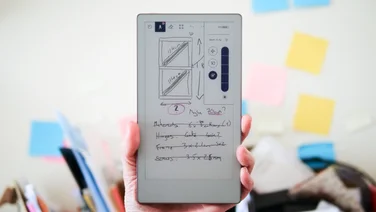To help us provide you with free impartial advice, we may earn a commission if you buy through links on our site. Learn more

Apple has officially shown off the new Apple iPad Pro (2024), alongside the latest refresh of the iPad Air. Both were unveiled during the company’s Let Loose event today, which confirmed several rumours that had been swirling around the latest Apple tablets for a while.
Chief among these was confirmation this generation of iPad Pro finally sees Apple adopting OLED technology. Both the 11in model and the new 13in model feature the new “Ultra Retina XDR” OLED display, an improvement over the previous generation, in which only the larger variant got the advanced microLED display.
As it’s Apple, this couldn’t simply be any old OLED screen, either; this is a “tandem OLED” display, which layers two OLED panels, one on top of the other, to deliver improved brightness. Apple claims that the iPad Pro can hit 1,000 nits full-screen brightness when displaying SDR and HDR content and up to 1,600 nits peak brightness for HDR.

Considering how heavily iPad Pros are marketed as laptop replacements, it’s always been a little baffling to see the front-facing camera positioned on one of the short edges, thereby giving the impression that the tablet is designed to be used mainly in portrait mode. That quirk has finally been rectified here, with the 12MP webcam now sitting along a long edge.
Speaking of edges, there’s barely anything to them this time around – in fact, Apple has stated that this is its thinnest product to date. The 11in model is just 5.3mm thick, and the 13in is even skinnier at 5.1mm; that’s thinner than even the iPod Nano.

Weight has been shed, as well: the 11in model now weighs just 445g (down from its predecessor’s 446g) while the 13in version drops almost 100g from its 12.9in predecessor, coming in at just 581g. The only real design carry-over from the M2 iPad Pro is the colour options, with your choices once again limited to Silver or Space Black.
Unwilling to simply rest on the merits of the new OLED display, Apple also announced that the iPad Pro (2024) marks the debut of the brand-new M4 chip. This processor is developed on a second-generation 3nm manufacturing process and features a total of 10 cores – four performance and six efficiency.
Apple claims that this new chip delivers CPU performance up to 50% better than the M2 chip and GPU performance up to 4x that of its predecessor. Additionally, that extra power is said to enable new rendering features in mobile games, with mesh shading and ray tracing appearing for the first time on an iPad Pro.

Rounding out the M4 chip is an improved 16-core neural processing unit, which Apple says is both faster and more efficient than its predecessor, allowing for up to 38 trillion operations per second. This power can be used to bolster applications within the Apple ecosystem and beyond, with the example given being able to isolate a subject from its background in a 4K video in FinalCut Pro with just a tap.
On the storage front, Apple has doubled the gigabytes in the base option, now starting from the 256GB model, with 512GB, 1TB and 2TB variants returning. The downside of that is that there’s no cheap 128GB model, so the 11in now starts at £999 and the 13in starts at £1,299.

That’s just for the tablet, mind you. If you want the full laptop-replacement experience, you’re going to need to cough up even more for a Magic Keyboard attachment, and maybe the Apple Pencil, too.
Speaking of which, Apple announced new versions for both alongside the tablets: the keyboard is now thinner and lighter, with an aluminium palm rest, a slightly larger trackpad and a row of function buttons above the numbers. The Apple Pencil Pro, meanwhile, adds a squeeze function, haptic feedback, a gyroscope that allows you finer controls when rotating the pencil and support for Find My, in case it slips off its charging mount on the iPad Pro.
The new Magic Keyboard is £299 for the 11in model and £349 for the 13in, and the new Apple Pencil Pro will set you back £129. We had our misgivings about the M2 iPad Pro’s exorbitant pricing, so it will be interesting to see if we think that the M4 version offers better value for its high asking price. Check back in with us soon to see our final verdict in the full review.






